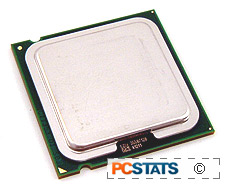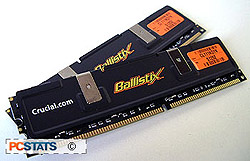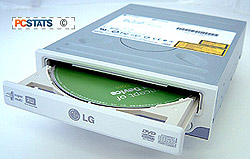 Now it's time to assemble the parts we are going to use to
build our home theatre PC. We've
taken care of the case and motherboard, and a CPU cooler was included with the
Aopen XCube barebone system. The fully-copper Aopen ACP4SH heatsink is thermally throttled so that it only
spins as fast as it needs to, which helps to keep noise down
(but not to silent levels).
Now it's time to assemble the parts we are going to use to
build our home theatre PC. We've
taken care of the case and motherboard, and a CPU cooler was included with the
Aopen XCube barebone system. The fully-copper Aopen ACP4SH heatsink is thermally throttled so that it only
spins as fast as it needs to, which helps to keep noise down
(but not to silent levels).
When
selecting your own CPU heatsink, chances are that the original cooling solution
that came with the processor will be just fine. We're not going to be doing any
overclocking with this HTPC, and modern Intel and AMD heatsinks are
engineered to be fairly quiet, and meet specific thermal guidelines from
the start. If you want an absolutely silent solution, you will need to look elsewhere
for low-noise third party cooling solutions, but for
us, the stock heatsink will be entirely sufficient for this application.
Case, Motherboard and
Heatsink
When
selecting your own case and motherboard, it's really more
a matter of your own taste than anything else, but for the motherboard, be
sure that you have an 8X AGP or PCI Express x16 slot, as well as at least one
free PCI slot. Additional PCIe x1 slots are a good idea too, but not
essential. For the case, ensure that you check where the vents are
positioned, so you do not block them if you stack your new HTPC with the rest of
your entertainment equipment.
 For
processor and memory, we're going to make use of a 3.2GHz Intel P4 'E' processor and two 512MB sticks of Crucial Ballistix Tracer memory. The processor is quite a bit faster than is
actually required for HTPC duty, but you might as well stick as much power as possible into
the PC in case you decide to use it for other purposes.
For
processor and memory, we're going to make use of a 3.2GHz Intel P4 'E' processor and two 512MB sticks of Crucial Ballistix Tracer memory. The processor is quite a bit faster than is
actually required for HTPC duty, but you might as well stick as much power as possible into
the PC in case you decide to use it for other purposes.
The Crucial Ballistix DDR memory modules create
some pretty
light shows with built-in activity LEDs, but more importantly these modules are
solid and dependable performers from one of the best memory companies out
there.
Hard drive and Optical
drive
 A nice fast hard disk is essential for a reliable HTPC, and for
that
role we opted for a medium price-range 80GB Seagate Barracuda 7200RPM
SATA drive.
A nice fast hard disk is essential for a reliable HTPC, and for
that
role we opted for a medium price-range 80GB Seagate Barracuda 7200RPM
SATA drive.
Since the typical HTPC is going to be the media hub of your home, you'll want
the ability to burn onto CD and DVD as well as read DVD
disks. The only sensible choice is a multi-format DVD writer.
For this article, we'll be installing an LG
GSA-4120B DVD/RW combo
drive.
Networking options
Unless you want to run (or already have run) Ethernet cables throughout
the house, a wireless network adaptor is the only way to go
for a HTPC. While it's true that the other stereo components won't require an Internet or
network connection, we're pretty sure you will immediately regret not having
Internet capabilities available to the HTPC if don't hook it up to the
internet. For one thing, networking the HTPC to the rest of your home computers
makes transferring video and music files vastly easier.
Since the
AOpen Xcube barebones system only has a single
free PCI slot which we are reserving for the TV-tuner card, we chose a Gigabyte
802.11G wireless USB adaptor to provide wireless connectivity. Note that
if your home is not currently set up for wireless networking, you will also need
some sort of wireless access point or home gateway. See our guide to setting up a wireless network at home for more details.
If setting up a wireless network is too much trouble, then used the wired
network jack on the motherboard and run Cat5 cable to the HTPC.

